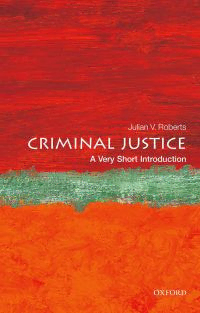
Criminal Justice: A Very Short Introduction PDF
Preview Criminal Justice: A Very Short Introduction
Cover page Page: i Halftitle page Page: i Series page Page: ii Title page Page: viii Copyright page Page: x Dedication page Page: xi Contents Page: xii Preface Page: xiv Acknowledgements Page: xvii List of illustrations Page: xviii Chapter 1 Introducing criminal justice Page: 1 The objectives of criminal justice Page: 2 Punishing and preventing crime Page: 3 Key principles of criminal justice Page: 5 Models of criminal justice Page: 6 Components of criminal justice Page: 9 Public perceptions Page: 10 Limits on the power of the CJS Page: 11 Discretion in criminal justice decision-making Page: 12 Limits on the effectiveness of criminal justice Page: 13 Criminal injustice Page: 15 Chapter 2 Between the crime and the court Page: 18 Public vs private policing Page: 18 Fix those windows! ‘Broken windows’ Page: 24 Increased powers of the police Page: 25 Responding to crime without going to court Page: 26 ‘On the spot’ fines Page: 27 Official cautions Page: 28 Bailing the defendant Page: 29 False positives and false negatives Page: 31 Pre-trial developments Page: 31 To charge or not to charge Page: 32 Negotiating justice: ‘let’s make a deal’ Page: 33 Sentence reductions for a guilty plea Page: 36 The limited time offer Page: 36 Chapter 3 In court and on trial Page: 39 Prosecutors and judges: elected or appointed? Page: 39 Judges and juries Page: 40 Juries Page: 42 Specialized courts: making the CJS fit the offender Page: 47 Juvenile courts Page: 50 The wrong man: when criminal justice fails Page: 52 Chapter 4 Why punish … and how? Page: 57 Sentencing objectives Page: 59 Rehabilitation Page: 62 Sentencing objectives in practice Page: 63 Sentencing disparity Page: 65 The sentence of the court Page: 66 Guidance for courts at sentencing Page: 67 Mitigating and aggravating factors at sentencing Page: 70 Principal sentencing options Page: 72 International variation in imprisonment rates Page: 73 Financial penalties Page: 74 Community-based punishments Page: 75 Supervising offenders in the community Page: 78 Community or custody: which is more effective? Page: 79 You be the judge Page: 80 Chapter 5 In and out of prison Page: 82 The state of prisons today Page: 83 Who’s in prison? Page: 86 Women and children in prison Page: 87 ‘Lifers’ Page: 88 The crimes that lead to imprisonment Page: 90 Repeat business: ‘you again!’ Page: 91 Why don’t prisons rehabilitate? Page: 92 The bottom line on prisons Page: 94 Release from prison Page: 95 Parole Page: 96 Against parole Page: 97 The benefits of parole Page: 98 The effect of information on public attitudes Page: 101 Home confinement: the virtual prison Page: 102 Life in the virtual prison Page: 103 Life after release Page: 104 Escaping a criminal past Page: 105 Chapter 6 Hearing the crime victim? Page: 107 Finding a role for the victim Page: 107 Categories of crime victim Page: 111 The participatory victim Page: 113 Victim impact statements Page: 114 Are victim impact statements beneficial? Page: 116 Victim recommendations at sentencing and parole Page: 117 Chapter 7 The future of criminal justice Page: 121 Appendix: extract from the Court of Appeal judgment Page: 126 Further reading Page: 130 Index Page: 133 Social media Page: 138 Online Catalogue Page: 139 Forensic Psychology Page: 140
Description: